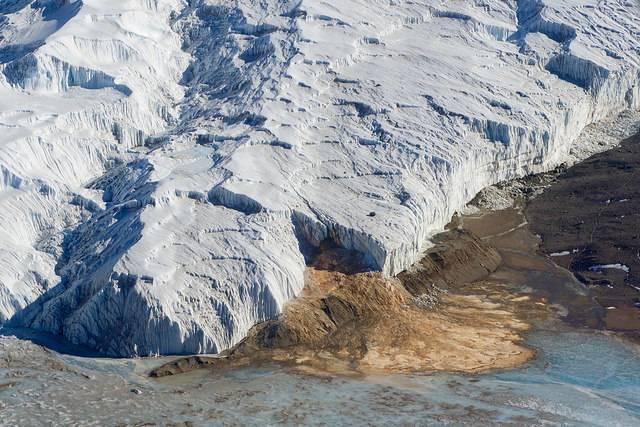
While the media is focused on the Arctic’s future – and the impact climate change could have on energy exploration, shipping lines and international relations – the opposite polar region is also undergoing rapid change.
Late last year, four New York Times journalists joined a Columbia University team to witness the changes underway across the earth’s fifth-largest and southernmost continent. What scientists showed them was shocking, as they described a potentially apocalyptic future once thought best suited for a Hollywood B-film.
In a worst-case scenario, much of Antarctica’s mass could break up, which could cause sea-level rise to surge as much as six feet by the end of this century. That's twice the increase that climate scientists agreed upon only a few years ago.
That outlook should worry some of the world’s largest companies, many of which centralize their operations in global megacities such as New York, Shanghai, Mumbai and Sydney – not to mention, of course, the chaos that would ensue as coastal populations scramble to move farther inland and to higher ground.
What the Times observed in Antarctica corresponds with what a team of British researchers concluded about changes going on across the continent in a paper published last week.
Antarctica is becoming greener, and in a way that should concern both environmentalists and economists. As more Antarctic ice melts and more land is exposed, biological activity increases; and in the case of this region, the beneficiary is moss. The rate of moss growth on Antarctica could be as much as five times higher than before the 1950s.
As Nicola Davis of the Guardian surmised, a warmer Antarctica could spur more business, as in more visitors to the continent. The problem is that it would be highly likely that more invasive species could take root across the region, causing an ecological transformation with yet unknown consequences.
The researchers visited by the Times journalists acknowledge that their research poses even more questions, which requires more study and of course, more dollars. But that $25 million that American and British scientists seek to understand more clearly the long term effects of the changes occurring in Antarctica comprise a cost-effective insurance plan if governments and the private sector are going to work together in order to develop secure climate action plans.
What may seem like a problem 9,000 miles away may seem esoteric now. But sea level rise will disrupt industries that often do not consider climate change in their long term planning; the real estate and insurance sectors, which of course are intertwined, are just two industries that come to mind. Coupled with the emissions that the transportation, agriculture and manufacturing sectors are contributing to the world, the research going on in Antarctica now shows that all of the decisions we make are related – and that progress on renewables, energy storage and more sustainably grown food can not occur fast enough.
At a time when companies are trying to stand out not only in the market, but in how they are responsible corporate citizens, Antarctica could be that last frontier. Funding research in Antarctica is for now, the fast answer, of course. But there is room for creativity here. The consultancy Bain & Company, for example, has been leading occasional expeditions to Antarctica for several years now, a program inspired by one employee’s life-changing experience visiting the region in 2010. Raising awareness is certainly one key to increasing climate action in the global business community.
Does any other company have ideas on how to increase awareness of threats to Antarctica to both consumers and businesses? After all, their future viability is at stake.
Image credit: U.S. Department of State/Flickr

Leon Kaye has written for 3p since 2010 and become executive editor in 2018. His previous work includes writing for the Guardian as well as other online and print publications. In addition, he's worked in sales executive roles within technology and financial research companies, as well as for a public relations firm, for which he consulted with one of the globe’s leading sustainability initiatives. Currently living in Central California, he’s traveled to 70-plus countries and has lived and worked in South Korea, the United Arab Emirates and Uruguay.
Leon’s an alum of Fresno State, the University of Maryland, Baltimore County and the University of Southern California's Marshall Business School. He enjoys traveling abroad as well as exploring California’s Central Coast and the Sierra Nevadas.














